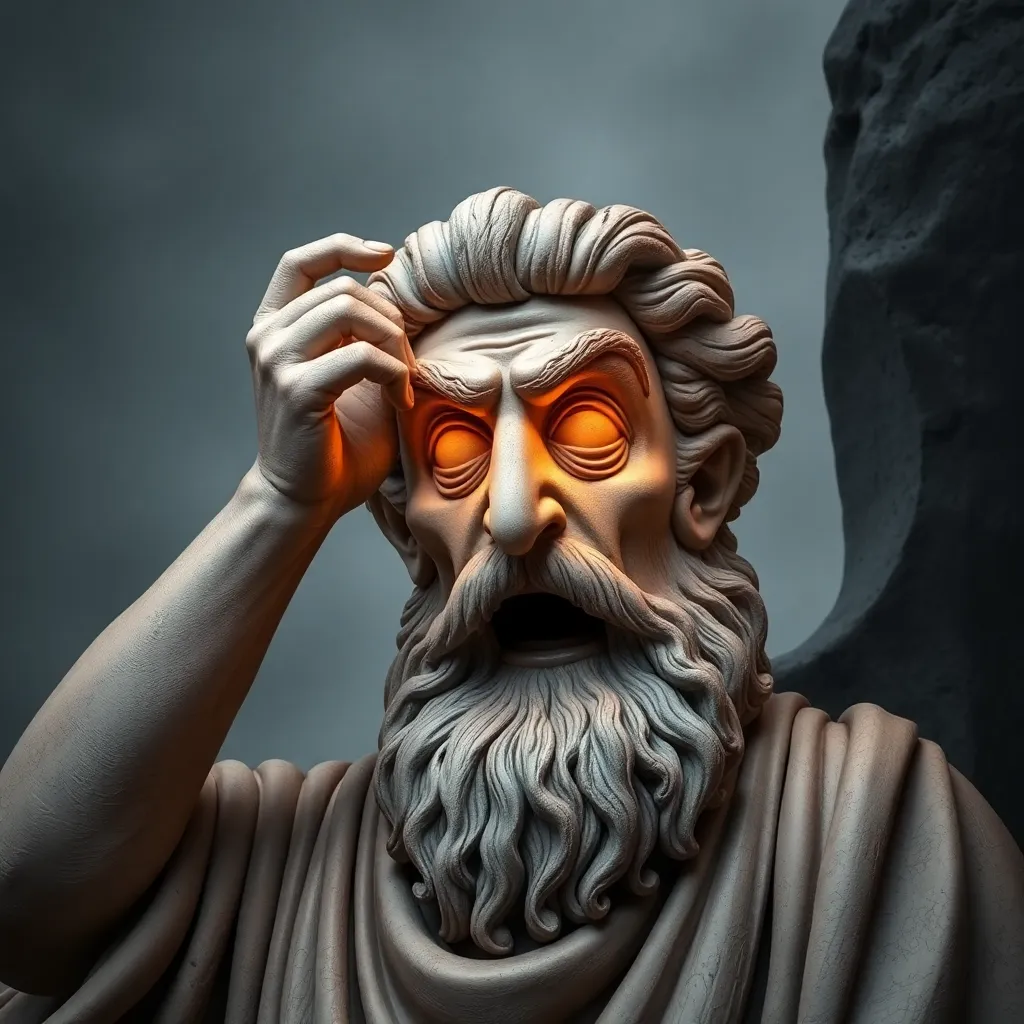The Cyclops in Greek Comedy: Humor and Satire
I. Introduction
Greek comedy has played a pivotal role in the cultural and artistic landscape of ancient Greece, serving as a platform for humor, social critique, and reflection on human nature. This genre, characterized by its use of satire and wit, often drew upon mythological figures to enhance its comedic narratives. Among these figures, the Cyclops stands out as a particularly interesting character, both feared and mocked, embodying traits that lend themselves to humor and satire.
This article aims to explore the Cyclops as a comedic figure within Greek comedy, examining how this monstrous giant has been portrayed as an object of humor and critique, and how such representations reflect broader societal themes.
II. The Cyclops in Greek Mythology
The Cyclopes, known as one-eyed giants, have their origins in ancient Greek mythology. They are often depicted as brutish beings with immense strength and a lack of intellectual sophistication. According to myth, the Cyclopes were the offspring of Gaia and Uranus, and they played significant roles in various tales, particularly as craftsmen who forged Zeus’s thunderbolts.
One of the most famous depictions of a Cyclops can be found in Homer’s “Odyssey,” where the hero Odysseus encounters Polyphemus, a Cyclops who traps him and his men in his cave. The tale of Odysseus’s clever escape showcases the Cyclops not only as a formidable adversary but also as a figure of foolishness and gluttony.
As the myth of the Cyclops transitioned into the realm of comedy, this character began to be reinterpreted, allowing for a humorous and satirical exploration of their traits.
III. The Cyclops in Ancient Greek Comedy
In ancient Greek comedy, the Cyclops emerged as a popular character, often featured in plays that blended humor with social commentary. Notable works include:
- Euripides’ “Cyclops”: This play is one of the earliest comedic adaptations of the Cyclops myth, presenting Polyphemus in a more humorous light, as he interacts with Odysseus and his men.
- Other comedic interpretations: Various playwrights incorporated Cyclopean elements into their works, often using the character to highlight human folly and societal absurdities.
The Cyclops serves as a catalyst for comedic plots, often embodying the ridiculousness of human desires and the consequences of ignorance, thus allowing playwrights to explore deeper themes through laughter.
IV. Humor Techniques in Cyclopean Comedy
The comedic portrayal of the Cyclops utilizes various humor techniques that engage the audience and provoke laughter:
- Physical humor and slapstick elements: The Cyclops’s immense size and clumsiness lend themselves to visual gags and slapstick comedy, providing comedic relief through exaggerated physical actions.
- Wordplay and puns involving the Cyclops: Playwrights often employed clever wordplay, using the Cyclops’s singular eye as a metaphor for narrow-mindedness or lack of insight, thus creating layers of humor.
- Satirical commentary on societal norms and human behavior: The Cyclops often represents societal flaws, such as greed or ignorance, allowing for sharp critiques of contemporary behaviors under the guise of comedy.
V. Themes of Absurdity and Parody
In Greek comedy, the Cyclops is frequently depicted as a caricature, exaggerating traits such as brutality and stupidity:
- Representation of the Cyclops as a caricature: The one-eyed giant becomes a symbol of exaggerated human flaws, showcasing the absurdity of certain behaviors.
- Parody of heroic and tragic figures through the Cyclops: The Cyclops often serves as a foil to traditional heroes, highlighting their shortcomings and the absurdity of their quests.
- Exploration of existential themes through absurdity: By placing the Cyclops in ridiculous situations, playwrights examine themes of existence, purpose, and the human condition in a humorous light.
VI. The Cyclops as a Symbol of Human Flaws
The Cyclops embodies various human flaws, making him a suitable subject for comedic critique:
- Examination of greed, gluttony, and ignorance in the Cyclops: The Cyclops’s insatiable appetite and lack of foresight serve as a metaphor for human excess and folly.
- The Cyclops as a reflection of human nature and societal issues: His behavior often mirrors societal dysfunctions, allowing for a humorous yet poignant critique of contemporary life.
- The use of humor to critique personal and societal flaws: By employing humor, playwrights create a space for audiences to reflect on their own behaviors and societal issues through the lens of the Cyclops.
VII. Legacy of the Cyclops in Modern Comedy
The influence of the Cyclops extends beyond ancient Greece, permeating modern comedic works:
- Influence of the Cyclops on contemporary comedic works: The archetype of the Cyclops appears in various forms in literature, film, and television, often retaining its comedic and absurd qualities.
- Evolution of the Cyclops archetype in modern media: Modern adaptations often reinterpret the Cyclops, balancing humor with deeper themes of alienation and societal critique.
- Continued relevance of Cyclopean humor in satire: The Cyclops remains a powerful symbol for satirical commentary, allowing comedians to tackle complex issues through humor.
VIII. Conclusion
The Cyclops’s role in Greek comedy highlights the intersection of humor and societal critique, allowing for a multifaceted exploration of human nature. From ancient mythology to contemporary interpretations, the Cyclops has evolved into a symbol of absurdity, reflecting both personal and societal flaws in a humorous manner. This enduring legacy invites further exploration of Greek comedic themes in literature and performance, encouraging an appreciation for the complexities of humor and satire.




